

This week The English Apple Man visited a number of orchards in full bloom, but via my armchair as BAPL grower members have been allowing me access to their 'BAPL Orchard Watch' files. Beautiful blossom at various stages and a prolific be activity enhance these special pictures
Over the last few weeks, the cold but sunny weather has coaxed the apple and pear blossom from bud burst towards blossom time. In years past, this process was fairly uniform. The main variety was Cox and other varieties were of a similar development stage.
Today the divergence of varieties reach blossom time at different stages: e.g. Braeburn in advance of Gala and then Cox. There are many more.....
But always Pear before Apple
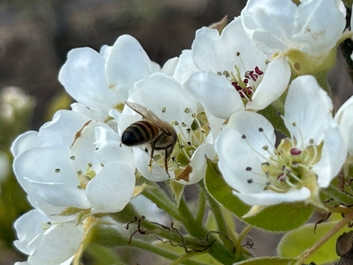
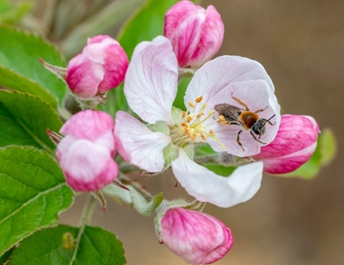
Speaking to an East Kent grower today, he confirmed his variety spread has the early flowering varieties well into full bloom and late flowering varieties at early stage of bloom.
Pollination is critical to a good crop - pollination produces 'quality and quantity' and our friendly bees are so important in the process. Good weather is obviously very influential, although the 'strength of the fruit bud' enhanced by winter chill is a key factor
There are around 250 solitary bee species in the UK and The EAM lists some below / Credit The Woodland Trust.
Honey bees
We have just one species of honey bee in the UK. It's a domesticated species introduced by bee keepers - it's now incredible rare to find our native wild honey bee species in the UK.
Honey bee (Apis mellifera)
Honey bees are easily recognised by their slim, sandy thorax and black abdomen with golden-amber bands. They live in hives of up to 20,000 individuals, and are commonly found feeding on open flowers they can easily reach with their short tongues, including those of trees, herbs and shrubs.
Bumblebees
There are 24 types of bumblebee in the UK. These clumsy balls of fluff are a social species, nesting in colonies of around 200 bees.
Red-tailed bumblebee (Bombus lapidarius)
Female red-tailed bumblebees are jet black with a bright red or red-orange tail, while males have a yellow-haired head and collar, a weak yellow midriff-band, and a red tail. These bees can be spotted anywhere they can find their favourite food plants, from parks and gardens to wildflower meadows. They tend to nest in old mammal burrows and hibernate in north-facing banks in open woodland.
White-tailed bumblebee (Bombus lucorum)
White-tailed bumblebees have a bright yellow collar, a yellow abdominal band and a bright white tail. They look very similar to buff-tailed bumblebees (which have a browner collar and an orange-tinted tail), and early bumblebees (much smaller, with a bright orange or yellow-orange tail).
Common carder bee (Bombus pascuorum)
These beautiful little bees are the only UK species with all-brown colouring and no white tail. They range from ginger to a pale, sandy brown, depending on how sun-bleached they are.
Common carder bees are very common and are found everywhere from arable land to urban gardens. They have the longest flight period of any of our bumblebees and likely have two generations per year.
Around 90% of UK bee species are solitary bees - a huge group that includes mason bees, mining bees, leaf-cutter bees and countless more. Some can be hard to identify, so let's take a look at some of the more distinctive and common types of solitary bee in the UK.
Red mason bee (Osmia bicornis)
These bees look similar to some mining bee species, but you can tell them apart by their boxy heads and large, powerful jaws. They have a black head, brown thorax and orange abdomen, and in females, a lot of fluff!
You're likely to see red mason bees in built-up environments, and they're the bee most likely to be tucked up in your bee hotel.
Tawny mining bee (Andrena fulva)
There is no mistaking the tawny mining bee: a honey bee-sized ginger species with a thick orange coat and a black face. These bees feast on a range of shrubs and are found in a wide variety of habitats. From gardens to parks, if there is an area of light soil where they can nest, you're likely to spot one.
Ashy mining bee (Andrena cineraria)
A stunning mining bee with monochrome stripes. Like tawny mining bees, ashy mining bees nest in tunnels underground, often in gardens. They leave a volcano-like mound of earth behind as they excavate, and are known to close this entrance over once they've finished foraging for the day, or if it starts raining.
Under the 'Leadership of British Apples & Pears' - Orchard Watch - BAPL members are creating an ongoing 'living library' of 'orchard life' .
Below: White tailed bumble bees on blossom
 White-tailed bumblebee (Bombus lucorum)
White-tailed bumblebee (Bombus lucorum)
White-tailed bumblebees have a bright yellow collar, a yellow abdominal band and a bright white tail.
They look very similar to buff-tailed bumblebees (which have a browner collar and an orange-tinted tail), and early bumblebees (much smaller, with a bright orange or yellow-orange tail).
White-tailed bumblebees can be found almost anywhere, feeding on a diverse range of flowers.
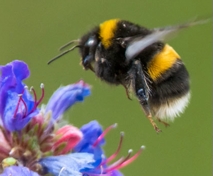
Below: left to right. Honeybee & Andrena Solitary bee / Buff tailed bumble bee / Common carder bee / Credit Alex Radu
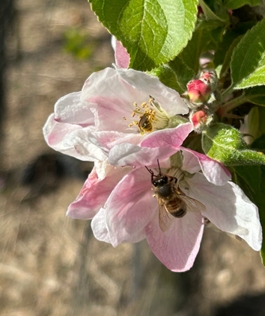
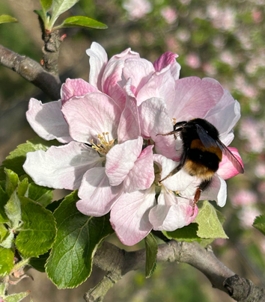
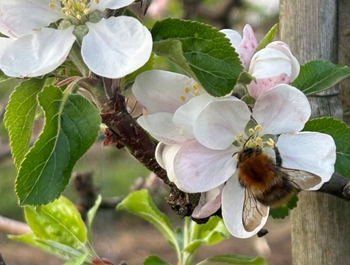
Below: left to right. Bumble Bee / Tawny mining bee / 'Busy bee' ' Credit Paul Hamlyn/Brendan Rhodes
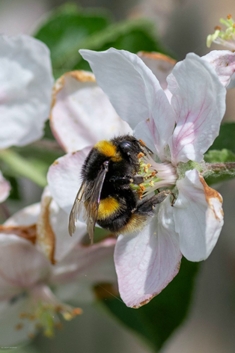
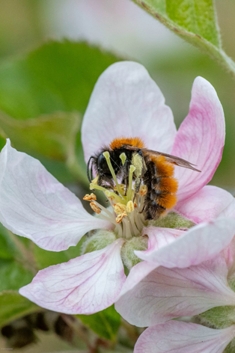
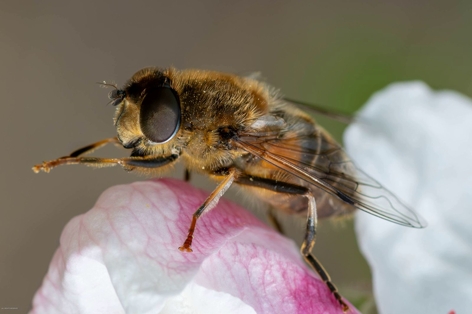
Below: Left. Anthocorids released to feed on Pear Sucker / Pear sucker eggs food chain for Anthocorids. / Pear sucker feeding /Credit Paul Hamlyn / Adult anthocorid
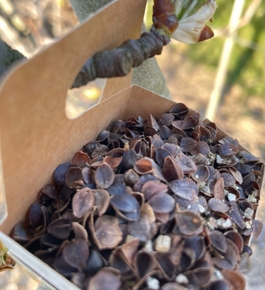
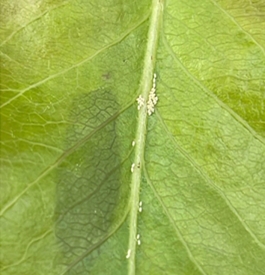
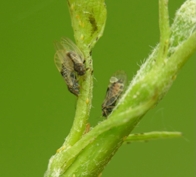

Below: left. Conference pears at petal fall / right. Conference pear fruitlets forming 'need to thin down to 3 pears to achieve marketable size / Credit Paul Hamlyn

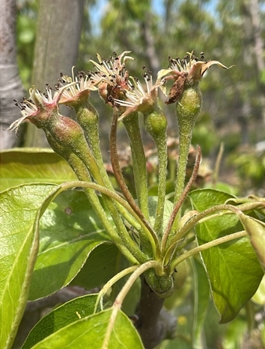 Setting an ideal crop is not easy.
Setting an ideal crop is not easy.
Pears after the initial set, turn over after a week or two and at that point they shed unwanted fruitlets - too many dropping reduces the potential crop, to few and the pears will not achieve the target size. In the picture if 3 of the 7 fruitlets remain the 60-65mm optimum size should be reached.
Beautiful blossom
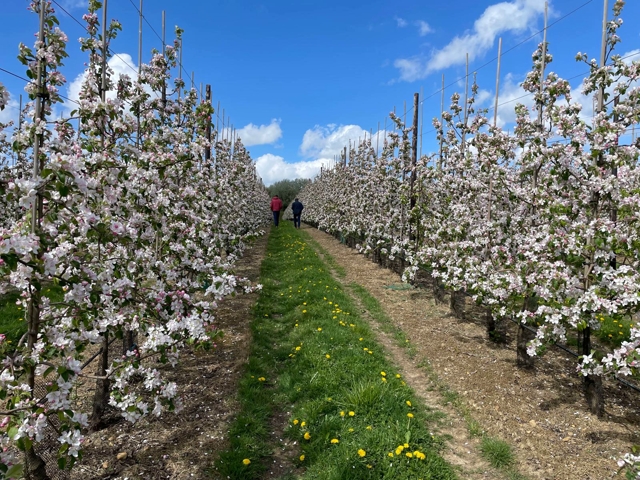
More Beautiful blossom
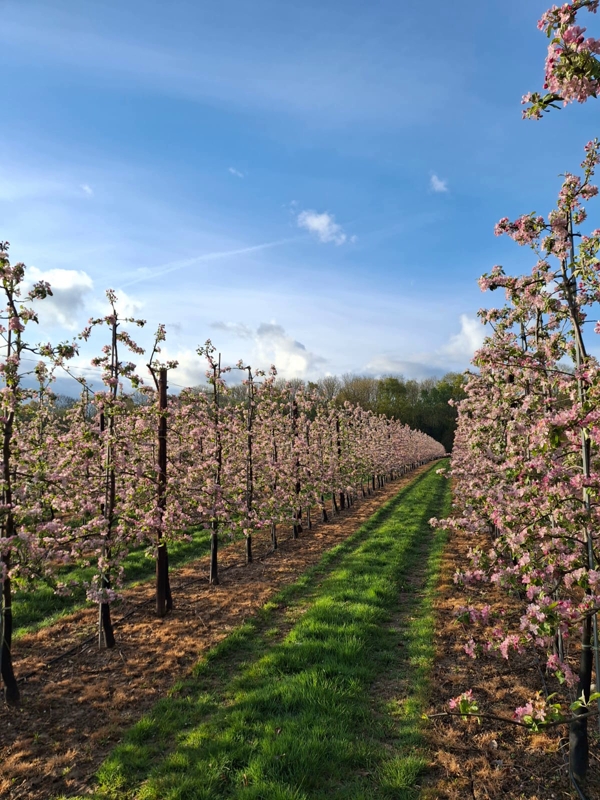
Even more beautiful blossom

From Pink bud to full bloom in just over a week
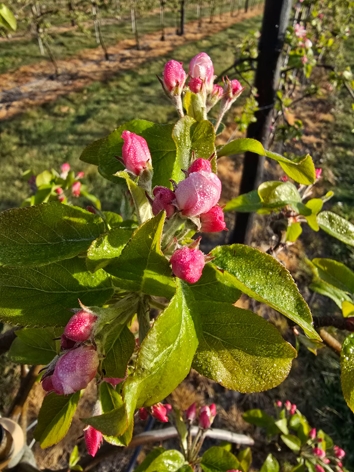

The English Apple Man thanks BAPL and BAPL growers for the stunning pictures
![]() That is all for this week
That is all for this week
Take care
The English Apple Man